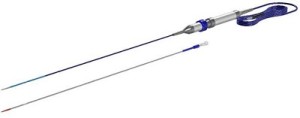
TVA Medical’s everlinQ endoAVF system has received NUB (German Neue Untersuchungs und Behandlungsmethoden) Status 1 approval across more than 80 leading hospitals in Germany.
The approval was granted under the German Institute for the Hospital Remuneration System (InEK) NUB programme for facilitating the introduction of new and innovative medical technologies. The designation of NUB Status 1 is the highest level available, and entitles the more than 80 hospitals with NUB approval to negotiate with insurance companies for additional funding to cover the cost of the everlinQ endoAVF system.
“This favourable decision from InEK represents a major milestone in our reimbursement efforts,” stated Adam L Berman, president and chief executive officer of TVA Medical. “We believe this decision validates the clinical value of the innovative everlinQ technology and, based on the high level of interest among physicians in Germany, will facilitate patient access to the everlinQ endoAVF system.”
The everlinQ endoAVF is designed to create an arteriovenous fistula for haemodialysis using an endovascular approach via catheter-delivered radiofrequency energy. The technology received CE mark in 2014, and recently the company announced positive primary endpoint data at the Leipzig Interventional Course (LINC; 26–29 January, Leipzig, Germany) from a prospective, multicentre clinical study evaluating the everlinQ endoAVF system. TVA Medical will begin controlled commercialisation efforts and a post-market study in Europe this year. The everlinQ endoAVF system is not currently available in the USA and has not been evaluated by the US Food and Drug Administration.
Worldwide, 3 million people with end stage kidney failure receive haemodialysis therapy and require vascular access to connect their blood circulation to a dialysis machine. Arteriovenous fistulas are the preferred approach to achieve vascular access but are associated with high failure rates, often as high as 60%.













